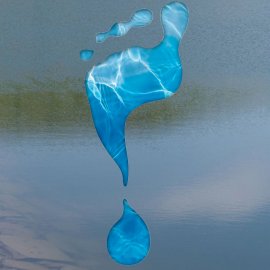Watermark (Pt. 5)
-
English
-
ListenPause
I’m Peter Neill, Director of the World Ocean Observatory. To solve the freshwater problem that is now evident around the globe, we must first understand how much water is actually available, how much we use, to what purpose, using what system, in what condition, and with what realistic capacity given rapid climate change and its visible and continuing catastrophic effect. The answer is complicated and can only be found in the understanding of “watermarks,” measures of use at every level of supply and demand -- for the individual, for separated uses or uses not integrated or included in the general calculation, for corporate manufacture and processing, and for the externalities of virtual water as hidden in almost every product that affects our lives. Even if these disparate elements are recognized, measured, and integrated into a larger discussion, the problem can still not be solved without addressing the larger national policy question and a revolutionary new governance approach that, taken together with complementary international policies, adds up to a global solution. The Water Footprint Network describes the situation as follows: “Traditionally, countries formulate national water plans by evaluating how best to satisfy water users. Although countries consider options both to reduce water demand and to increase supply, they generally do not include the global dimension of water management. They therefore seldom consider explicit options to save water by importing water-intensive products. In addition, by focusing on domestic water use, most governments are unaware of the sustainability of national consumption. Many countries have significantly externalized their water footprint without determining whether imported products are the cause of water depletion or pollution in the producing countries. Governments can and should engage with consumers and businesses to work towards sustainable consumer products. National water footprint accounting should be a standard component of national water statistics, supporting the formulation of national water and river basin plans that are coherent with national policies on, for example, the environment, agriculture, industry, energy, trade, foreign affairs and international cooperation. Water footprint and virtual water trade accounts are a relevant input into various governmental policy areas, such as national, state, river-basin or local water policy; environment; agriculture; industry/economic policy; energy; trade; foreign policy and development cooperation.” To assist this effort, the Network suggests a new international classification system for water-related ecosystem services based on “provisioning, regulating, and maintaining,” with sub-categories to include nutrition, terrestrial, freshwater and marine plant and animal foodstuffs, potable water, biotic and a-biotic materials and energy sources, regulation of waste, bioremediation, dilution and sequestration, air, water and mass flow regulation, atmospherics, physical environment, and water quality regulation, pedogenisis and soil quality regulation, lifecycle maintenance and habitat protection, pest and disease control, gene pool protection, cultural, aesthetic, heritage and spiritual considerations, and recreational and community activities, information and knowledge. And these are just the elements to be analyzed on land! Each and every one of these requires a new assessment of the failed status quo, with consequent invention, engineering, and implementation, with myriad consequent decisions and actions, and each and every one of these constitutes a changed impact on the particular challenge, in the particular place, felt thereafter along entire regional water collection area and watersheds, and ultimately reaching the ocean. This is not an easy process, without many difficult questions and no easy answers. But when, as today, cities like Sao Paulo, San Francisco, and Bangkok are exhausting their drinking water supplies, when the reservoirs and rivers run shallow or dry, when the water dependent crops cannot grow, when we can no longer stay clean or healthy, then this problem will find its urgent, irrefutable logic and we will change the “watermarks” we know today dramatically and forever. We will discuss these issues, and more, in future editions of World Ocean Radio.
The global water crisis and the prospects for future water resources is forcing adjustments for how we measure its use, how it is valued, and how (and to whom) it is allocated. In this fifth episode of a multi-part series on water, host Peter Neill suggests that in order to solve the fresh water problem we must first understand how much water is available and how it is being used—by understanding the “watermark” measures of use at every level of supply and demand; and he returns to the Water Footprint Network in order to outline their new international classification system for freshwater-related ecosystem services.
About World Ocean Radio:
Peter Neill, Director of the World Ocean Observatory and host of World Ocean Radio, provides coverage of a broad spectrum of ocean issues from science and education to advocacy and exemplary projects. World Ocean Radio, a project of the World Ocean Observatory, is a weekly series of five-minute audio essays available for syndicated use at no cost by college and community radio stations worldwide. A selection of episodes is now available in Portuguese, Spanish, French, Swahili, and Mandarin, enabling us to reach 75% of the world's population. For more information, visit WorldOceanObservatory.org/world-ocean-radio-global.
Resources from this Episode:
< Personal Water Footprint Calculator
More episodes from the Watermark series:
< Watermark, Pt. 1
< Watermark, Pt. 2
< Watermark, Pt. 3
< Watermark, Pt. 4
- Login to post comments



